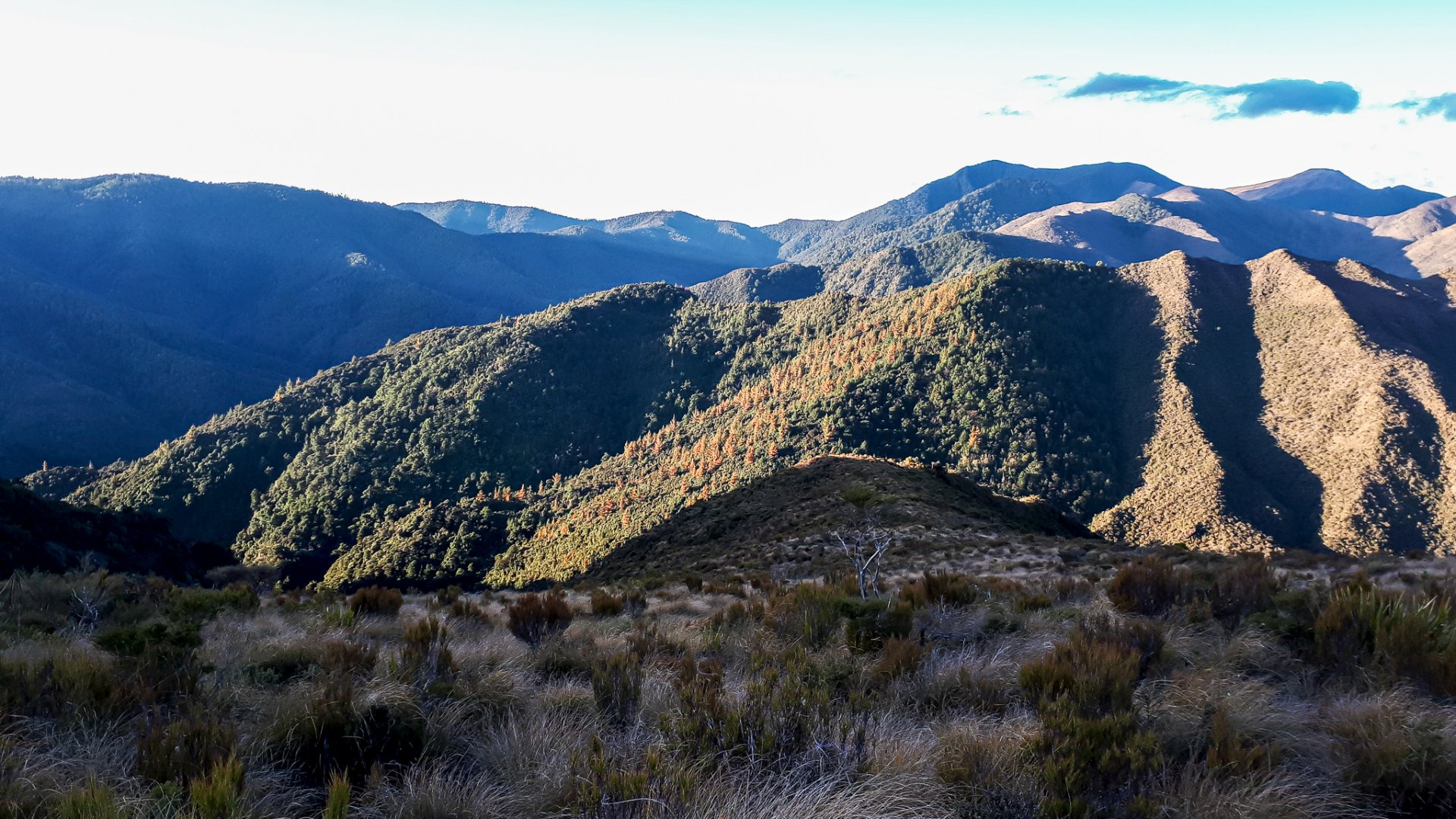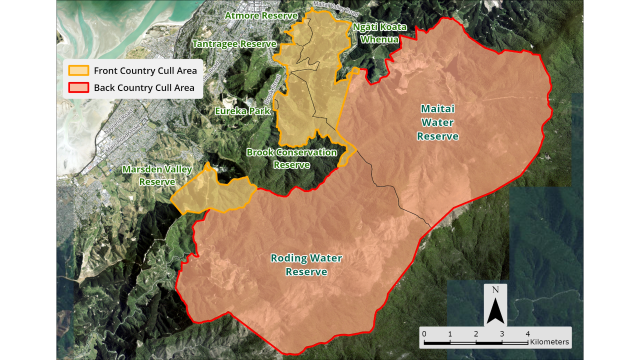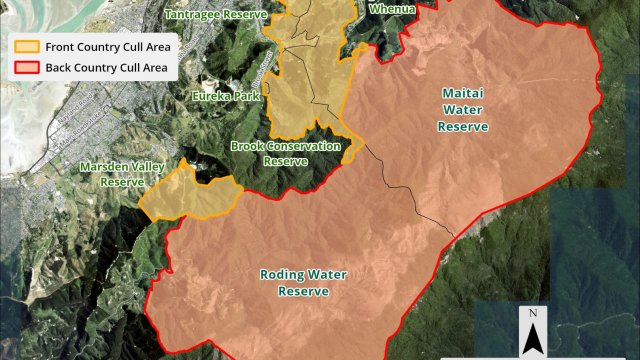Healing our forests: ungulate populations on the decline
01/12/2021 12:33pm
Nelson City Council carried out a successful cull of wild ungulates—hooved mammals like deer, goats and pigs—in the Maitai and Roding water reserves in September.
The cull, carried out four years running, is part of Council’s pest control programme to help protect the rare ecosystems of the forests surrounding the mineral belt, a unique geological area located southeast of Nelson City.
The mineral belt and surrounding forest occupy a 10,000 ha area that is important due to it being the source for Nelson’s drinking water and its exceptional diversity of native species and ecosystems.
However, decades of grazing by wild ungulates are threatening this important area.
Once ungulates have disturbed an area of the forest through grazing, space is created for new plants to grow. In many cases, this space is filled by exotic species rather than natives, which reduces the diversity of the ecosystem.
Foraged native plants that do try to regenerate are usually eaten before their seedlings and saplings can reach maturity and, depending on the number of ungulates in an area, some species could be grazed to local extinction.
If left unchecked, these grazing habits will eventually lead to the collapse of the forest canopy, as old native trees are no longer replaced when they fall. Exotic or unpalatable plants left behind would eventually overrun the area, and the habitat our native wildlife needs to survive would be lost.
These changes to the forest can be prevented, and Council’s annual cull is proving successful in controlling this threat.
The long-term goal of the programme is to reduce ungulate numbers to a low level within the control area to allow the undergrowth of the forest to recover.
Since the annual cull programme started in 2018, the number of animals culled each year has been declining while the land area covered has continued to expand, indicating a lower density of animals in the reserves.
Reversing the impact of ungulate grazing will take many years, but the Brook Waimārama Sanctuary offers a glimpse as to how quickly ecosystems can recover once ungulate populations are controlled.
The fence around the Sanctuary was erected in 2016/17, and all ungulates were removed shortly after. Since then, seedlings and saplings of the more quick-growing plants favoured by ungulates— broadleaf/pāpāuma, māhoe, five-finger/whauwhaupaku and species of Coprosma—have begun to thrive again.
In the Maitai and Roding water reserves, these types of changes may take longer to observe without a fence to prevent ungulate populations moving in from uncontrolled areas.
However, keeping the number of ungulates in the area as low as possible will give the undergrowth a chance to regenerate, and Council has long-term vegetation monitoring in place to assess this recovery over time.



